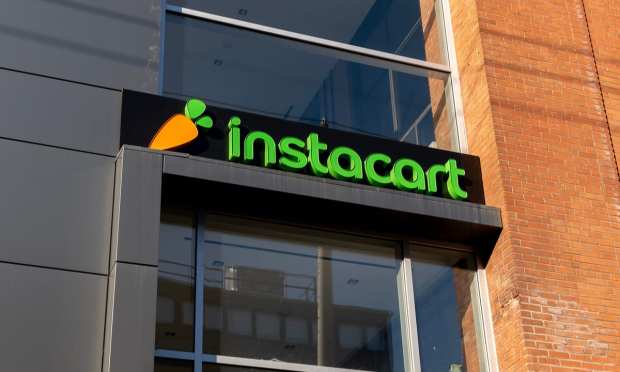Instacart Eyes Direct Listing To Maximize Stock Price

Concerned it could lose out by having a traditional initial public offering (IPO), Instacart is mulling the idea of going public through a direct listing, Reuters reported Friday (March 5), citing sources. The San Francisco-based grocery delivery company has yet to make a final decision on its next move, the sources said.
Earlier this week (March 2), Instacart said that it had raised $265 million, pushing its valuation to $39 billion.
The idea of skipping an IPO, Reuters reported, hinges on the way other companies’ stock has performed. Shares of newly listed U.S. companies that went public through an IPO ended trading up more than one-third higher by the end of their first day last year.
That compares unfavorably to 2019, which showed shares moving up by 17.2 percent on the first day of trading, according to data from Dealogic.
Some investment bankers say they often struggle to price in the impact of huge investor demand for popular consumer names, such as Airbnb and food delivery app DoorDash, Reuters reported. Other venture investors, including Benchmark general partner Bill Gurley, argue that investment bankers keep IPO share prices low to favor their Wall Street clients.
Instacart’s latest venture funding was led by existing investors including Andreessen Horowitz, Sequoia Capital, D1 Capital Partners, Fidelity Management & Research and T. Rowe Price. The company said it will use the cash to expand.
“We believe this is just the beginning for online grocery, and Instacart is well-positioned to continue to lead” the pack, said Jeff Jordan, managing partner at Andreessen Horowitz, in a news release announcing the funding. “As a long-time investor, we’ve been incredibly impressed by the team’s resilience and how they met the moment of 2020.”
Instacart said it will expand its corporate workforce by 50 percent in the first six months of this year.
The company said its delivery platform has developed almost 600 retail partnerships that allow it to deliver merchandise to more than 85 percent of U.S. households and 70 percent of Canadian households.
